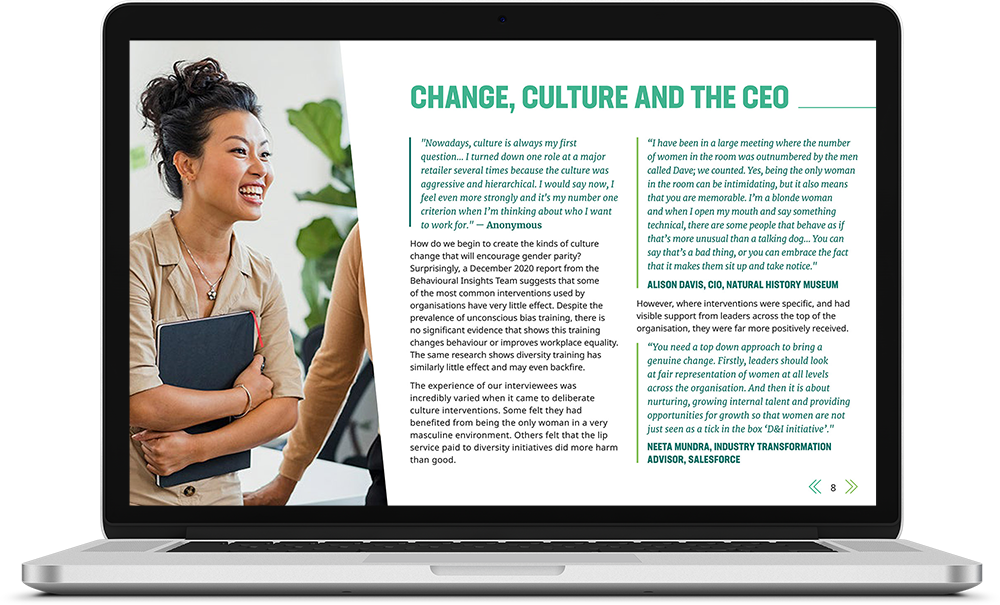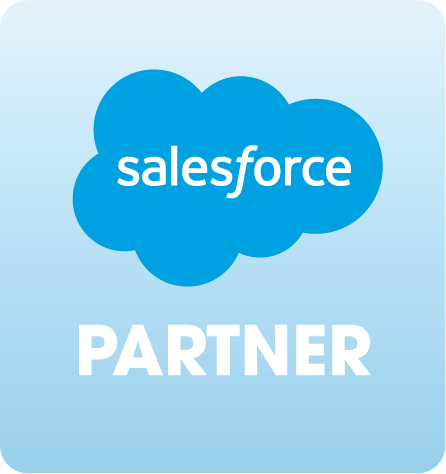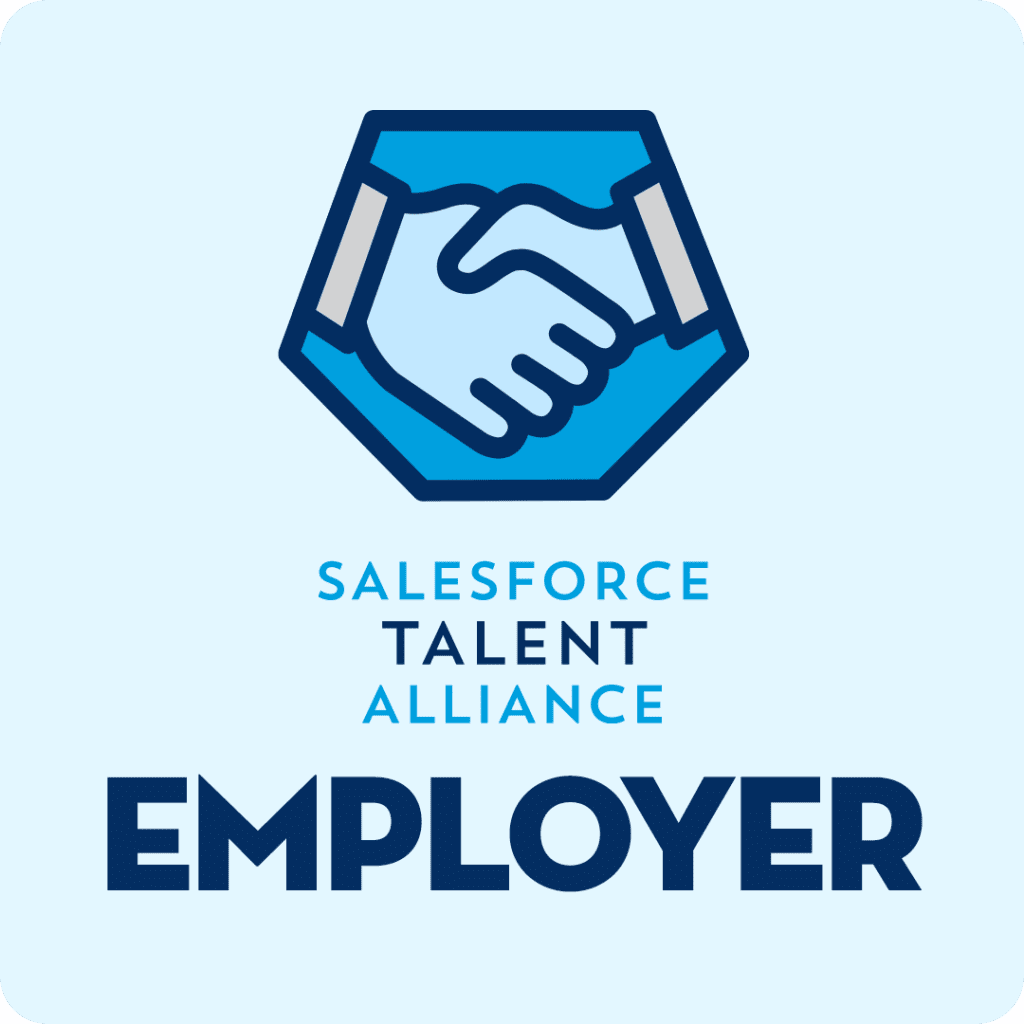Tech’s Leading Women
A new video series on lessons in gender, culture, and building an inclusive workplace.

Episode four
The role of the CEO
Rosie: Hello, I’m Rosie Ifould, and I’m delighted to welcome you to the latest episode of Tech’s Leading Women, a video podcast series that explores lessons in gender, culture, and building an inclusive workforce. I’m the Global Head of Bids and Customer Engagement at Tenth Revolution Group, the global leader in cloud talent solutions. I’m also the author of the whitepaper, Tech’s Leading Women, which inspired this series of vodcasts. In that original report, we interviewed over 30 inspirational women from across the tech industry about the challenges they’d faced and the solutions they’d found to help redress the balance in tech.
In today’s episode, we’ll be focusing on one of the key themes that emerged from these conversations, the role of the CEO, and how that person can impact an organization’s diversity and inclusion agenda. The women we spoke to almost unanimously agreed that the role of CEO, whatever the agenda, was crucial. Without great leadership, you simply don’t have the desire to drive change around workplace inequality.
So what are the benefits of having a CEO who leads from the front? Is it really that important for the CEO to live and breathe their company values? What support do they need from their board and the wider business, to bring that vision to life? And if you’re lucky enough to work for an organisation where the CEO is genuinely a champion of inclusivity, what happens when they leave? So I’ll be exploring all of these questions, and hopefully much more, with three amazing women from the world of tech. So let’s meet them.
Tia Dubuisson is the president and co-founder of data transformation company, Belle Fleur Technologies. Tia has over 10 years experience leading customer-centric products projects. I’ll start that bit again. Tia Dubuisson is the president and co-founder of data transformation company, Belle Fleur Technologies. Tia has over 10 years experience leading customer-centric projects and she’s extremely passionate about equipping the jet… Gordon Bennett. Tia Dubuisson is the president and co-founder of data transformation company, Belle Fleur Technologies. Tia has over 10 years experience leading customer-centric projects and she’s extremely passionate about equipping the next generation with tech skills.
Next, we have Katarina MV Galic, a pioneer in the women in tech space who specialises in transforming partnerships and driving change. She’s the former Director of the Women in Tech Commission and volunteers with the EU Tech Chamber.
Completing today’s lineup, we have Vicky Critchley, the CEO of cloud software solutions company, Bam Boom Cloud and recent Digital Revolution Award Winner in the prestigious Leader of the Year category. Vicky is an advocate for people being their authentic selves at work, placing an emphasis on a culture that values empathy, trust, clarity, and kindness.
Thank you, Tia, Katarina, and Vicky for joining me today. I’m really looking forward to hearing your unique perspectives on this topic. So shall we get started?
Vicky, I would like to come to you first, if I may. So you were the CIO of the organisation that became Bam Boom Cloud before you stepped into the role of CEO. So I’d like to start, perhaps, by asking you what is the key difference really in being a CEO? How has that job title changed your perspective on the way that you lead?
Vicky: That’s a really good question. I see it as a shift change because the business ownership changed at the same time as me becoming CEO, so a little bit of a potted history. Before we were part of a bigger organisation. We were part of an accountancy practise so we were kind of their IT arm and we decided to do an MBO. And at that point, I became the CEO of Bam Boom Cloud and I also became an owner of my own business for the very first time. So it was the way that I felt about the business and the way that I felt about everyone who worked for me completely changed from having, even though I had a C-level role before, I suddenly had something of my own to care about and thought I could re-imagine what a CEO meant. So I’d never had a female CEO before. I didn’t particularly work for diverse organisations before running my own business. So I had to have a real long think about what that actually was, what did that mean? And I thought that, as well as doing the normal things of have an amazing brand, sell lots of clients, make profit, all of those things that are really important to running a business. But I just thought that there could be a different element to what I could bring to the table by creating a more inclusive environment, creating an environment where it’s okay to make mistakes, where it’s okay to push the bar, where people feel comfortable working in our environment, they feel that it’s, we say it’s a family, it’s a community. So yeah, it was just a chance to just change things up. And I hope that the people in the business feel that support because that’s how I want them to feel.
Rosie: That’s really interesting actually, to think that it was part of an organisation that you had been part of for quite a long time, but you saw the opportunity there to make it and shape it.
Vicky: Yeah, I needed something of my own so it’s kind of what can I do to make this my own. It’s when you want to put your stamp on things. I wanted it to be something different to what I had experienced in the past and create an environment that felt different for people to work for me. So it was really important to create that environment.
Rosie: Tia, I know you’ve had a sort of similar journey in that you came from a tech background and you founded an organisation that you are the leader of. Do you see similarities in the way that journey was for you as it was for Vicki? Kind of building something that you could put your values at the core of?
Tia: Absolutely. And Vicki, I want to say, the word that you used was empathy. And I think that’s at the heart of what I heard everything of what you just said, being an empathetic leader. That is different. I have worked for, unlike yourself, female CEOs. And I’d have to say I saw opportunities, like yourself, when we decided to make our own company, that there were ways that we could do it differently and really being intentional about what those differences were, based on my experience as being an employee. We would like to say that the female CEO, there was one that I worked for that she would be extremely empathetic and right on par. And I think she was kind of more of the same. And you have to kind of understand maybe she was under certain pressures from the board to be more of the same. There are other challenges that maybe she was not able to overcome that I was very, very intentional about, when we started our company, that we would make sure that we defined our company in a way that would set us apart. That would actually look at everyone in the organisation and make sure that everyone was taken care of, as you mentioned. Hopefully, that everyone in the org feels your support from the top. And I think she was maybe under some pressures at times to not actually be that empathetic leader, even if she wanted to be deep down. Making sure that, our employees are internal customers is how we look at it. And making sure we’re leading from their desks, basically, and their pain points and their experience and making sure that it’s a part of our experience, as you mentioned, like a family.
Rosie: That’s really interesting. I think that idea, as well, of intentionality and putting that at the heart of it, that’s a really interesting concept to have a think about. Katarina, I wonder if I could ask you about that, actually. I know you are somebody who’s worked with a lot of organisations in your role with EU Tech Chamber. And part of what you do is really help other organisations to shape that mission and think about the way that they build strategy intentionally. So I guess my question to you would be, are there qualities you think that you identify quite early on in the leaders that you’re working with, where you think those are the qualities, I think, make a good CEO who’s able to lead on issues of DEI?
Katarina: Thanks, Rosie, for that question. I think that’s a very important question that we should all be talking about. I have been working with a lot of people, a lot of women around the world, similar to Vicky and Tia, who started their businesses. And I’m really talking about really every corner around the world, more than 5,000 companies, specifically in the last couple of years. And when we talk about women in technology, women CEOs, women leaders, I think there’s a big difference if we compare the start-ups and SMEs compared to the big corporations. When we look at the SMEs and the start-ups, it comes from your belief that there’s something that you want to create. And the foundation of every business is really collaboration, belief, goals, and ideas that you want to accomplish. And when you start bringing people in, you are creating your culture based on your beliefs and bringing people who get along with that culture. So it’s really beautiful to see how, from that specific environment, we see a leader that comes out because leader becomes by daily decisions that we make. And Tia, you are right, there’s impact from the board at one point. There is impact from even stakeholders. But if we stay true to ourselves and we stay, we align our decisions with our personal beliefs and values, that kind of leader comes with us from the development. When we look at the corporations in the big, big companies that are, that have been established for some time, if you see a woman who’s going through that, climbing up the different positions for creating for herself, it is a completely different road that she has to go through. And we see women changing their approach as they grow. And as they change an impact comes from external and internal factors as well. So it’s, again, a different way of developing ourselves, but I think the culture, the true belief to ourselves and the values is something that is very, very important.
Rosie: That’s interesting. I think what’s interesting for me in what all three of you have just said is thinking about at what point you join the organisation as a leader as well. Tia, you mentioned working for another female leader who had a lot of external pressures, perhaps, and could not be the leader that she wanted to be. And I guess that, perhaps, is an interesting shift if you look at the size of the organisation that you are involved in and what those external pressures are and who are the people that are allowing you almost to be the kind of leader that you want? That’s a really interesting cogitation to have, if you like. Tia, I wonder has your leadership style changed in the 10 years that you have been sort of at the helm of this kind of work? And as Belle Fleur has grown, have you been conscious of having to adapt, as Katarina says, and make changes to your leadership style?
Tia: I would say absolutely, Rosie. I think as you grow, we have a unique opportunity because we are a consulting firm. And so we get to work, as with Katarina said, with start-ups that are at different phases of their life cycle and growth and their different growth cycles. We get to work with SMBs of various sizes but we also get to work with enterprise. And we get to see the challenges that each one of those industries legitimately have. And you kind of get to draw a matrix of what those challenges are but also then a matrix of what those opportunities look like. And you get to then look and align at how certain organisations are more successful than others, even with those same challenges, with the same opportunities on the table. It’s the decisions from leadership to either support certain processes that their people can actually run on and be successful versus more of the same. And without a doubt, it’s like you can almost sit back, almost like a parent and you’re like, oh, if they touch that fire, they’re going to get burned. I mean, you it’s hot, you can see it. It’s almost happening in slow motion in front of you. And so we have the unique opportunity to be able to really learn from others. It’s a lot easier to learn when you’re kind of watching from the outside in so that you can kind of then turn that lens on yourself, if you’re really being intentional, and say, are we doing more of the same or are we really doing something different? And in those differences, how are they being received? And can we actually measure success off of those differences that we’re trying to incorporate with our people, within our organisation to really be successful and to really make sure that everyone is invited to the table, everyone has that access? And are we really having a diversity of thought or is it really more of the same? So that’s what I would say to that.
Rosie: That’s really interesting being able to sort of observe others making maybe similar mistakes, maybe making new discoveries that you then want to implement. I wonder, can you think off the top of your head, has there been an example of that way where you’ve had a light bulb moment and watched somebody doing something that you either thought, I will absolutely never do that myself as a leader, or I hope I never will, or actually that’s something I want to bring into my own style?
Tia: I would say probably, I guess there’s two things, right? I think I’ve observed both, as you mentioned, some of those nuggets that are great, and like absolutely we’re doing that. We were working with a company and I loved the way that they had a female leadership that was very on the cutting edge of making sure that everyone was at the table at all costs and was heard. And when she saw that certain people weren’t listening to others and she definitely saw, there was a clear kind of male-female bias that was going on there. And she literally said, okay, that’s it. We’re going to take a day and we’re going to the basketball court. And it was hilarious. They didn’t change out of their clothing, they literally went with their office clothes. And what she did is she removed them from an environment that I think actually really set the stage for that bias to stay in place. It was a place of comfort for certain people to keep certain people in a certain place, to not be open-minded. And so she removed them from the environment physically to try to drive the environment change that was here mentally. And I thought that that was interesting and it really helped them to break the ice. And I know people may think, oh, it’s cheesy doing these kind of, some of these things. It literally broke the ice. It allowed the men to see the women in the room very differently and vice versa, the women to also see the men for what it was that was a bias that maybe they didn’t even really know that they actually had, which was interesting. And the women actually uncovered biases that they had as well, too. So we can’t be victims, we have to be victorious. And so how do we make sure that everyone is victorious in the room? Breaking the bias means you got to first uncover that there’s one to begin with and you have to be honest that we all have them, even if we don’t know what they are. And the only way to champion past that is when they are exposed, are you going to do something about it or not be a champion, hold onto the bias because it’s your place of comfort and do nothing. And I thought that that was very interesting.
Rosie: That is, that’s really interesting, yeah. And being able to think objectively about your own comfort zone, I think that’s a real challenge for all of us, whatever level we’re at. Vicky, I wonder if, I mean, when Bam Boom became Bam Boom, was it just before the pandemic started or it was sort of at in the early days, wasn’t it?
Vicky: Yeah, we were crazy and did the MBO during the pandemic during lockdown. So yeah, someone would say bad timing, but it all worked out. So, yeah.
Rosie: I just wondered ’cause obviously we all found ourselves suddenly in this very, very different way of working. Our first priority, I think probably for all of us, it’s not unfair for me to say, it was the well-being of staff. But it did also put everyone that we worked with in a very different context. You got to see people’s kitchens or their spare rooms or their dogs would run through the room. I’m just wondering if there were opportunities for you in thinking about, okay, I’ve got this team suddenly who are looking to me, but they’re in a very, very different situation. Did that sort of involve how you picked up on strands of your DEI strategy and shaped that?
Vicky: Yeah, I think regardless of what I was trying to do with D&I and being more intentional on that, I think we’re suddenly being, we’re completely working from home and seeing into people’s lives. So pets, kids, just everyone. The kind of the façade that I’ve personally had to like, the different face that you have to put on to climb the ladder to be what other people think that you should be, even the way that you speak when you’re at home versus when you’re at work, and that kind of all came crashing into one thing when we all worked from home is that you’ve got your kids learning from home on the kitchen table while you were doing teams calls and the whole thing got very blurred together. So I think some of the even dress, the way that you dressed, and it was kind of the whole thing just all of a sudden changed regardless of what we were trying to do with any promoting diversity in the business. It was, yeah, it was a complete mashup of let’s just get real. Let’s just be real people. And that part of that being real is caring about your co-workers, caring about your customers, doing the right thing, asking people if they’re okay. Like people were going through some tough times, especially if they were on their own or they were, we’ve got some new young people who work for us so they effectively spent 24-7 in their bedrooms, working from their bedroom, then staying in their bedroom. And you couldn’t help but feel that you needed to look after these people and create something that we’d never created before and you had to do it all online as well. So you had to create more of a caring, an opportunity for people to come forward, tell you when that they weren’t quite right, that they were struggling with dealing with kids being at home when we’ve got working mums. And those sorts of things, that support mechanism was suddenly the most important thing because everyone was kind of concerned for everyone else. But the whole façade of climbing the tree and pretending to be something at work slipped away. It slipped away for me personally, is that I just thought, right, this is my business now, I can just be me and everyone else can be them. And we can see each other for who we are. So it doesn’t, nobody needs to put their game face on because everyone’s talented in their own right. So I think it really, really helped drop that corporate nonsense. And I don’t know if that’s ’cause we’re an SMB ourselves. But we really don’t want that corporate nonsense back. And our customers don’t want that either. We’re talking to our customers and they’re at the kitchen table having conversation about what they’re having for food that you’d never have with a customer before all of that. You’d never do that in a million years. Or you talk about that you’ve got, we’ve got a little Jack Russell. We were talking about pets and all sorts of things. But that’s real people, I mean real conversations. So why change it back to the corporate nonsense conversations about water cooler conversation? Just be real and then everyone feels more comfortable doing what they’re doing and excelling at what they can do because they feel like they can tell you what’s wrong, what they’re enjoying, those types of things. So yeah, I think it really, really helped.
Rosie: Yeah. It’s really interesting. When we started the interviews that became the whitepaper that then inspired this vodcast, it was at the beginning of the pandemic. And we were speaking to a lot of women in very senior roles who were talking about this idea of authenticity as a leader and how you find and build your own authentic style of leadership. And how it took some people quite a long time to think about what that was for them rather than emulating perhaps the men in the room. But I think as the pandemic has grown and changed us all, we’ve got very used to this idea of authenticity being something that we should embrace. So it’s a really interesting shift from where this project started at the beginning of 2020 to where we are now. And it’s kind of one half of the sort of the package that makes an ideal leader when it comes to sort of instilling DEI, I think. I think, this is my theory. I think the other half of that is about the strategic change or the structural change that you are able to put in place. So if you do leave for whatever reason, what does that organisation look like that you have left behind? And Katarina, I wonder if I can ask you a little bit about that? What are the structural things that really need to be in place in an organisation so that that DEI value isn’t just held up by one person at the top? Where do you start? Where would you start with an organisation that you were working with?
Katarina: Yeah, that’s a really great question, Rosie. Where do we start? Obviously, we need to start at the beginning. So we need to base our organisation on belief of diversity, equity, and inclusion. Inclusivity is very important and it does look different for all of us because everybody comes from different families, from different cultures, different countries, different experiences. And so that really forms us in different personalities. When we create a team that believes it’s comfortably one culture and that believes in the value that other people bring to the table, when we respect the value that those people are bringing, this is how we scale up the quality of the team and this is how we start creating the culture. As we grow the team, people who join us either adjust to the culture and they stay with our organisation or they decide to leave because they didn’t find the right fit. Strategically, we look for this in every group, if this is a larger organisation, every group needs to be included and engaged and involved in any operation that the company’s working on. And so when there’s a new decision that needs to be made, the best possible thing to do is to ask people for their opinion, to collect the feedback. And this goes two ways really to show them that you care for their opinion because we hire them because they’re valuable, they’re knowledgeable, they’re skilled, they can bring some benefits. So that means that I really want to ask you, what do you think about this new project that we’re working on or something that we need to implement. And then when we collect the feedback, the senior management need to assess and obviously they’ll go through the strategic planning assessments. A lot of decisions has been made until we decide if there’s a new project that we will be working on. But what stays here is the trust with employees and then their belief that they can come back to you and share their opinion, share their thoughts, new ideas. Anything that they believe company can grow in a specific way or maybe scale up or if they see an opportunity, from their perspective, that senior team is not able to see, that’s a big value. And so if we scale up the organisation and engage different teams, this is the culture of inclusiveness in one way. And so when you mentioned, what if a CEO leaves, a right company, when they are thinking about long-term growth, one part of the strategy is really thinking about what’s going to happen if our management changes? What is going to happen if our board, if you have a great board of amazing people who support you, even if you lose two members, that’s going to shift the company a little bit, even if it’s a strong organisation. And so it is very important to have part of the cultural perspective that we have a plan what’s going to happen in the next three to five years. I know that after those last two years, it is very difficult for us to plan anything. But it needs to have maybe conversations about any changes that are coming up. Some of the companies, big international companies that went through the crisis really badly, but then they came out successfully and one is just because they had a risk management plan. What’s going to happen if there’s something really bad that hits our company? How do we manage that? What’s the best possible thing to have? And I think by being engaged in small companies and in start-ups and in big companies, such as companies who have offices around the world, it’s not a big difference in the mindset, if it’s the right one. How do we plan if there’s any risk factor that can hit our operations?
Rosie: That’s really interesting. And I think, yes, it’s about having that mindset but also having those conversations at every level and to continuously invite that feedback. That’s a really interesting way of thinking about it. I wonder if, sorry, go on.
Katarina: Yeah, I was just going to give you a great example. I was part of an organisation. I would say it wasn’t, it was like an in-between small and medium organisation where the senior team, we would prepare the budget for the whole year. And then once it’s done, not finalised, but we were closer to the numbers that we can show to the organisation, we would have a meeting with everybody in the company and then show them the budget, go through their department, and ask them for feedback. So regardless what you do in the company, you would be able to see the budget, not in the details, general budget, and then provide the feedback to your leader and tell them what you think, if there’s something that needs to change or not, based on your job and your perspective. Starting from the assistant, main reception desk, up to the senior directors. And I thought that’s a great example.
Rosie: That is a really good example, yeah, yeah. I mean, it’s interesting. I wonder what the response was when that was put in place to people who thought, oh, you know, that’s an awful lot more work for something that’s probably already quite a lot of work? And yeah, interesting that they were able to make that change and make it happen. And were people very, was the feedback then from that exercise very good? How did that sort of influence how the company operated in those kind of decision processes after that?
Katarina: That really impacted the organisational culture in a way that we had a couple of people who asked, do I have any responsibility with the budget? Why do I need to provide the feedback up to those who said, oh, okay. So now I have a say in this. People are looking into the work that I do and they want to hear my feedback. So we had people who are happy when this is happening. We had people who just wanted to find out, am I responsible for something? No, you just need to share your thoughts. And then when the next year came, they asked, are we going to again look at the budget? So there’s an expectation, right? But they know we are part of. It’s not somebody else is not looking into money that my department is going to spend. If I’m working here, I have a say in it because I do the work, I know how that feels. And so that was a big, big support for everybody to really understand how company appreciate what they do, understand what their challenges are at work, and try to work with them closely to find out, let us know what you need to do your job even better and to be happy at work they can do.
Rosie: Yeah, thank you. That is a fantastic example of a question that I almost wanted to ask all of you really, which was about how you inspire people and bring them along with you or how you convince the people who might be part of your organisation that don’t immediately see the value and the impact of being a diverse culture, of having an inclusive workplace, where everybody feels valued. I know that we’re more accustomed to talking about it now but there are still some people who think, well, this is not relevant to profit. This is not relevant to our success. It’s just, it’s an add-on. I hope that a lot less people share that view these days, but I’m sure you’ve all encountered those people. So I wonder how you inspire those people who maybe need a little bit more convincing to come on the journey with you? Tia, I’m going to put you on the spot and come to you first with that question.
Tia: I appreciate being put on the spot, Rosie. I would say there’s been a number of ways that we’ve looked at it, because like you mentioned, not everyone is going to see it from your point of view. Not everybody’s going to see it from the point of view of the person right across the table from them. How do we get everybody on board? How do we inspire them? And you’re going to have to know what drives everybody in the room to be able to do that. Certain people, you are correct, for them, it is a bottom line conversation. No matter what, they look at everything from the numbers. And so being able to say, if we are more inclusive, and when I think of diversity, I think of diversity of thought. Bringing in people from various backgrounds that are psychology majors. We have people who have gone on and gotten advanced degrees in psychology. They’re some of our best data scientists. They have to deal with data. And a lot of our customers are looking for data-driven insights to make decisions. Now, do they have a computer science background? No. But if they have the right mindset and they have a lot of the undergirding and tenants when it comes to looking at data, how to classify data, really a lot of the heart of what the data story is, we can teach them any type of platform to actually then compute that data and be the computing arm, get them certified and do those things. So really having those conversations early and often with HR, making sure they’re agile, making sure that again, we’re not doing more of the same. We’re not uncovering talent under the same rock. I think a lot of times we can tend to do that with these job descriptions. So we even had to look at our job descriptions and kind of pull the covers behind that and say, what are we actually promoting? Who are we actually trying to invite to the table? At the heart of what it is that we’re delivering to our customers, what is it? And that’s throwing no shade to anyone who has gotten a computer science degree, highly respect it. But even myself, I’m, there you go, Vicky, I’m a microbiologist by trade so I do come from the STEM arm. I am not a computer science major by any means but I am running a tech company, a consulting firm that is helping to lead and guide a lot of our different customers from startup to enterprise around their data and analytics solutions on the cloud. So being open to that, being able to talk with your HR departments, being able to talk to finance and say, hey, along this path, we need a healthy mix of junior, mid-level, and senior level talent. We need to make sure that we are creating a talent pipeline, creating opportunities for people to grow, to re-skill, and to up-skill. You mentioned 2020, that was a big opportunity to actually capture a lot of people who said, you know what, maybe I need to re-think jobs of the future and kind of future-proofing myself. What are some things that can dive into? And helping them to really, from their subject matter expertise of being an accountant, of being a psychologist, of being all these various backgrounds. And they come in so much talent that just needs to be leading and guided in the right ways. And going beyond training, but how do we enable and how do we build our enablement paths with HR to make sure that we can capture this talent, re-skill them or up-skill them, and really help them? Especially with us being consultants, we deal with all industries. So if they’re an accountant, I want you with my finance customers. I will teach you what you need to know, but bring what you already know to the table. And I want you to see where tech is already intersected with your industry so that you can now get on board and help our customers. And so for us, I think it’s been looking at that as a way of giving access and partnering with various organisations that have gotten grant monies or what have you to bring in some of those individuals. And then we partner with them to make sure that we can build out playbooks for each and every one of them across the board. So that’s just one way.
Rosie: I think bringing what you already know to the table is such a brilliant message, actually, that we can all emphasise and make clear to all the people that we work with in our organisation, wherever they are. Bring what you already know to the table is just such a simple essence. It’s the essence of what inclusive workplace is, should be really. It’s welcoming diversity of thought. It’s welcoming plurality of approaches, I guess. That’s a really great message to think about. I’m really conscious of time. Thank you all ever so much for joining us today. I wonder if I could just ask you one final question. We’ve been talking a little bit about who inspires or how you inspire other people? So I’d really love to just know, from each of you, who inspires you as a leader? Who would be the person that you would look to to learn something from? Vicky, can I ask you that first?
Vicky: Putting me on the spot. Yes, that’s quite a tough one because I’d love to be able to say in my previous roles, there was someone in my previous role that really inspired me. I have had those, but for various, just different reasons, I respected that person, but they weren’t inspirational. And I know it’s probably really cheesy, but we work with Microsoft tech all the time, so it’s kind of the backbone of our business. All of our cloud deliveries are all Microsoft. And I’ve been in that industry now for 17 years and I’ve seen a material shift change since Satya took over the company. You can feel something different in the organisation that they’re very intentional with making sure that because of Satya’s background and his personal circumstances, that even like the accessibility of the tools that we’re all using today is intentional changes in tech because that he’s trying to flavour that into the organisation. And I think that to me is very inspirational. I have got a computer science degree. I am a massive geek myself. So my answer was always going to be tech-focused. So yes, it’s definitely Satya. Since he’s took over this, there’s an inspirational leader sat there on a huge organisation that feels that you can actually, small companies like mine, dealing with them, you can feel the intentional shift change in what they’re trying to do and the difference that they’re trying to make on the world. So yeah, definitely him.
Rosie: That’s great, thank you. Katarina, how about you? Who would you choose as your inspiration?
Katarina: I don’t have a simple answer as well. I think, a leader says we can take or devote their time energy, their mindset to create something that they believe in. And when I talk to those people every day, each of them will give me something that makes me believe there are ways how you can make a change in the world. And this is happening every day, we just don’t hear of those people every day and that motivates us. So what I usually do is I don’t have a name to share with you, unfortunately, but I usually look at who I was two years ago and what I know today more than two years ago and thinking what am I going to be in the next three years? What am I going to know that I don’t know today? How can I figure that out? And so those are the things that goes through my mind. And each day when I speak to somebody, it gives me some spark thinking, oh, that’s something they was looking for. Okay. So those things.
Rosie: That was a great answer. No, no, they’re all brilliant. Tia, you’ve got tough shoes to fill now with two fantastic answers. But who would you pick?
Tia: I was going to say Vicky but-
Vicky: Stop.
Tia: No, and I’ll say this, I appreciate your vantage point of being an empathetic leader. And I think empathetic leadership has not traditionally been seen as a point of strength but a point of weakness. And so the fact that you’re turning that on as head of your organisation is fantastic.
Vicky: Thank you.
Tia: But I think I probably would have issues if I don’t nominate our original CEO, Jacques Dubuisson. We are really living his vision. And I really appreciate him for really leading by example. And I think you should never be a leader that asks your people to do something you would never do. They need to see that whatever you’ve asked them to do is something that you would absolutely do. And I think that he has proven that time and time again. And I’ll share this, he actually helped me to uncover a bias that I didn’t really think that I had, I didn’t know that I had, and it’s not anything that I intentionally held onto, but it was exposed and I was faced with doing something about it immediately. And it was with our logo. So when we were creating the company, what’s the first thing you think of? Okay, what are we going to call it and why? And then what’s the next thing? Oh, we have to have a logo on this thing. So we’re creating this logo and you’re going back and forth with marketing and they’re saying, okay, what’s your accent colour? And I’m thinking, oh, all my favourite colours. Yes, I want purples and this and that. And he said, no colour. We’re going to do grey scale. We’re going to stick with black, white. I’m thinking, oh no, why? Why do we have to do this? And he has an artist, a visual arts background, very strong. And he said, what if we encounter a customer that’s colourblind? They will not see our logo. Shut down every conversation, any argument that we had in that room about colours and accents colours. We moved on to the next topic and I felt like I had egg on my face because I thought, wow, I had never thought of it from that lens or from that vantage point. And I said, you know what? So we had to explain that to a lot of people. A lot of people challenged us to pick an accent colour for many years. We never get that anymore now. People have just grown accustomed. And if you look at our logo to this day, you will see it in grey, you will see it in white, you will see it in black, you will see it in a grey scale. And we have never put an accent colour to it for that reason. So I would nominate Jacques Dubuisson for really being a leader that, not just has great speeches or says all the right things, but he’s actually really trying to carry those out as well, too, so there you go.
Rosie: That’s a fantastic answer. Absolutely fantastic. Thank you ever so much, all three of you today. You’ve really opened my eyes, genuinely, to some aspects of this whole discussion that I had not really thought about before. Thank you ever so much. Just to sum up a little bit, if I can, we’ve covered so much ground. But I think that message of intentionality and being able to build intentionality into your strategy, that’s something really key that came through loud and clear. I loved what you were all able to say about how you invite feedback and how you look at every level of your organisation and think about what is true for those people and what is urgent and what needs you can meet for those people as well. I love the idea of bringing what you know to the table as well. I think that that is fantastic. And being able to really value those perspectives and that diversity of thought that the people in your organisation will have within them and it’s about how you, as a leader, are able to bring that out. Thank you all very, very much.
I hope that everybody who’s been listening into this is able to take something away from that today as well. Thank you. If you’re watching this and you have any further questions that you’d like to put to myself or the panel, please do reach out by visiting frankgroup.com or through our Frank Recruitment Group social media channels. We do encourage you to like and share this episode and also keep an eye out for the rest of the episodes in the series, where we’ll be delving further into topics around gender, culture, and building an inclusive workplace. Thanks for tuning in.
Meet our panel
Moderator
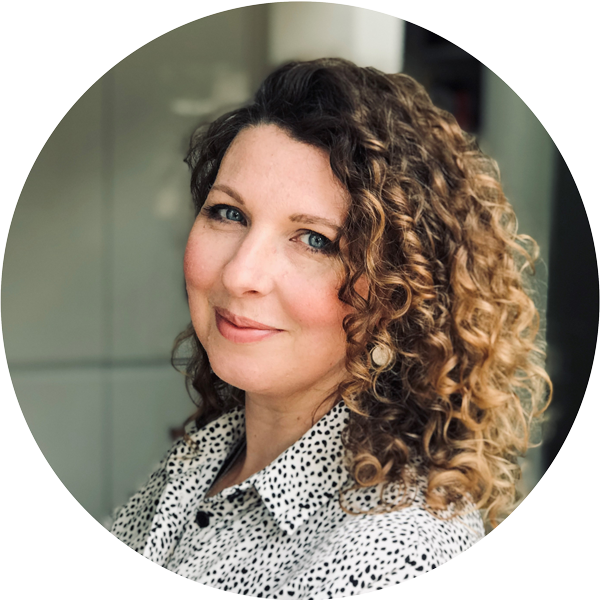
Guests


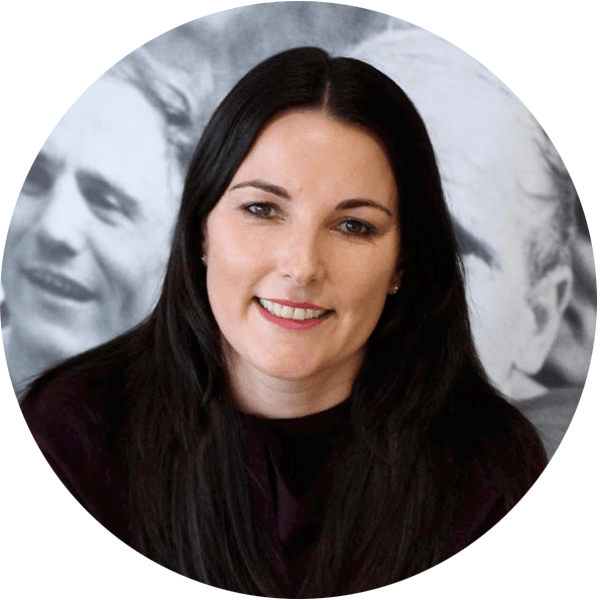
About Tech’s Leading Women
Tech’s Leading Women is a vodcast series inspired by a recent whitepaper published by Frank Recruitment Group, spotlighting some of the key issues facing women in the tech industry today. In each episode, we explore a different topic in more depth, with unique insights and opinions from inspirational thought leaders across the tech world.
